Supertest: French Tier VIII Premium Battleship Champagne
9 min readLadies and Gentlemen, before we start this little stats review, let’s clarify something.
The Champagne isn’t named after the sparkling wine, but after the region of France where it is made, the Champagne wine region.
In France, we are quite proud of our wine production, but it’s not up to the point of naming ships after alcohol. Even then, if we had to name a ship after alcohol, the first one would anyway be named Crémant since Alsacian crémant is far superior, just like everything that comes from Alsace.
(Of course, this little introduction is sarcastic. I know that people aren’t thinking that we could have potentially named a ship after alcohol and I’m also not going to devaluate champagne compared to crémant. I don’t want to start a civil war between Alsace and Champagne.)
Now on a more serious note, what is Champagne exactly? Well, to summarize it, it’s a Frankenstein monster made-in Wargaming and I will have to cover the 2 different elements (technically even 3) they took to put the ship together.
Firstly, when it comes to the hull, the Champagne is using the hull of the Gascogne.
The Gascogne, named after the region of France, was meant to be the 4th unit of the Richelieu-class battleship (even though she might as well be her own class at this point). Compared to her sisterships that had an all-forward main battery, the turrets on Gascogne were split with one turret at the front of the superstructure and the other at the rear, facing towards the stern.
This change in the design was made so that the ship wouldn’t have a significant blind spot at the rear. Another reason was to avoid the risk of losing the entire main battery in case of an unlucky shot that would cripple both turrets.
At the same time, the 152 mm secondary armament was relocated with all 3 turrets at the centerline of the ship, two forward of the superstructure and one aft. This would have offered more room for the anti-air armament.
Due to all these changes, the superstructure had to be moved forward and the main belt lengthen.
Finally, the aviation facilities had to be changed compared to the rest of the Richelieu-class and an internal hangar had to be installed at the rear of the ship like on U.S. battleships.
The construction of the Gascogne was never started due to the lack of an available dock large enough to build the battleship. She had to wait for the Jean Bart to be launched but due to… troublesome neighbors, Jean Bart was launched but Gascogne was never laid down.
Secondly, the turrets and guns, these are coming from the class that should have been built after the Richelieu-class, the Alsace-class battleships.
The Alsace-class was ordered to counter the H-class battleship the Kriegsmarine was planning to build.
Overall, 3 designs were being considered for the Alsace-class.
Design n°1 had a 40 000 tons standard displacement and its main armament was consisting of 3 triple turrets with 380 mm guns, the same as on the Richelieu-class. The engine power was reaching 170 000 horsepower for a maximum speed of 31 knots.
Design n°2, was heavier with a 42 500 tons standard displacement, a slight increase of the engine power to 190 000 horsepower and a main battery consisting of 3 triple turrets, but this time with newly designed 406 mm guns. These are the guns fitted on the Champagne in World of Warships and for the little story, these have similar performances to those of the Slava that were also designed by France. Yes, you read that correctly, Slava’s guns were designed in France, it’s not Russian bias here.
Finally, the design n°3 is the Alsace-class as we have it in-game (even though in-game, the engine power is only 192 000 horsepower while in reality, the design had an engine power of 220 000 horsepower and was planned to reach 32 knots. It was the largest design of all 3.
In the end, any work on the class stopped with the fall of France in June 1940. Some historians claim that France would have settled for the Design n°1, others say that they settled on Design n°3 since they didn’t need to design triple turrets and would then stick to the already existing quadruple turrets.
So, now that this is clear, we are getting the Champagne that has the hull of a Gascogne, the turrets of the Design n°2 for the Alsace-class and also the secondary armament of the Design n°3 with no less than 12 twin turrets with 100 mm guns in addition to the 152 mm triple turrets.
Also, I say that it’s a Gascogne hull, but it’s only visually. Her armor is much thinner than the one on Gascogne and also, she has 25 mm bow and stern.
To counter this weaker armor, the ship has a faster gun reload and also the large cruiser dispersion.
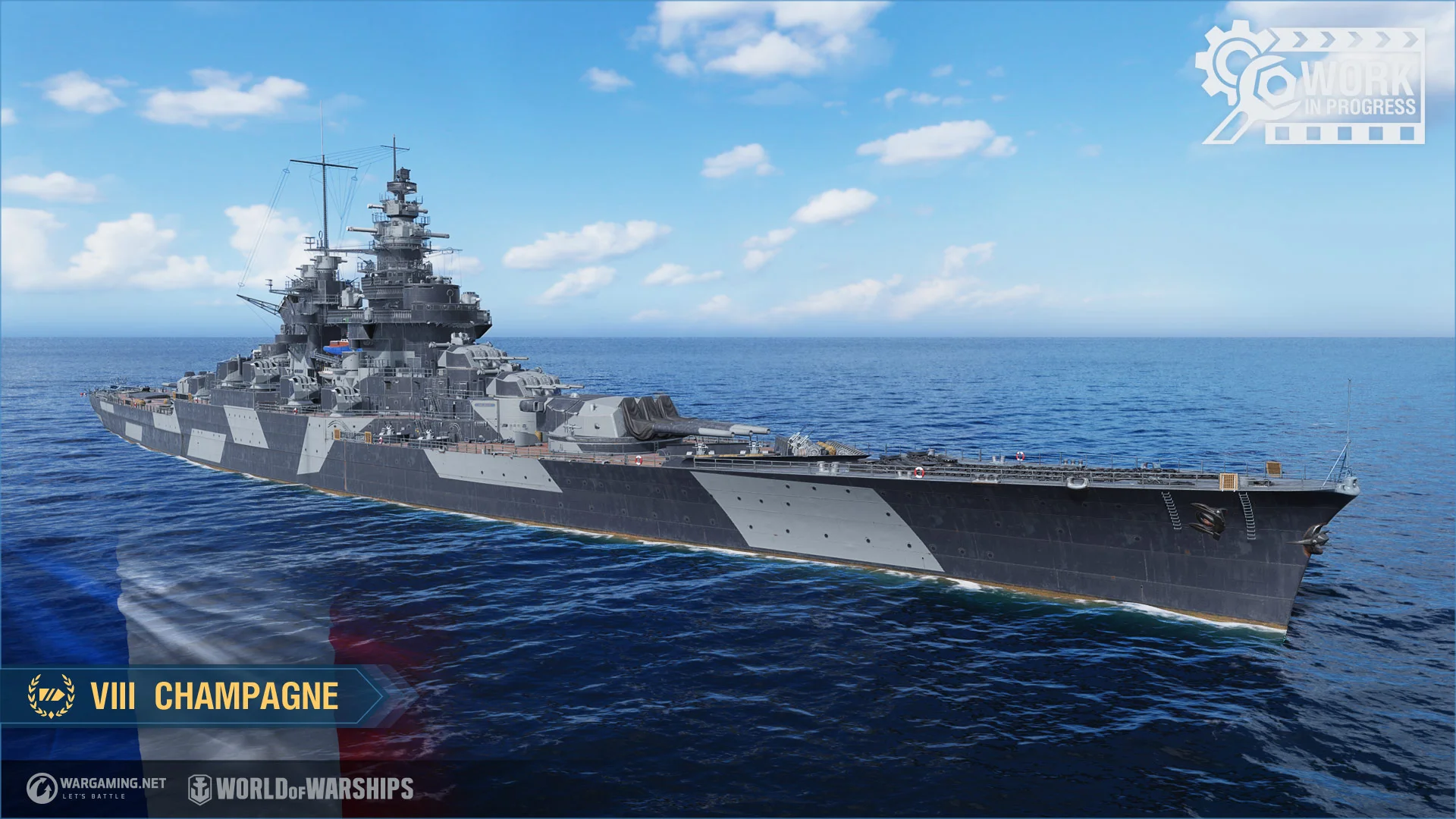
Hull | Engine | Gun Fire Control System | Main battery |
Champagne |
Propulsion: 155 000 hp |
PCA n° 8 Mle 1 |
406 mm/50 Schneider |
| Tier | VIII |
| Health | 60 900 HP |
| Displacement | 42 544 tons |
| Main Armament | |
| Maximum Firing Range | 25.020 km |
| 406 mm/50 Schneider | 2 x 3 406 mm |
| Secondary Armament | |
| Maximum Firing Range | 7.000 km |
| 152 mm/55 Mle 1936 100 mm/45 Mle 1933 | 3 x 3 152 mm 12 x 2 100 mm |
| Maximum speed | 34 kts |
| Turning Circle Radius | 850 m |
| Rudder Shift Time | 15.5 s |
| Surface Detectability | 16.38 km |
| Air Detectability | 11.01 km |
| Detectability After Firing Main Guns in Smoke | 15.82 km |
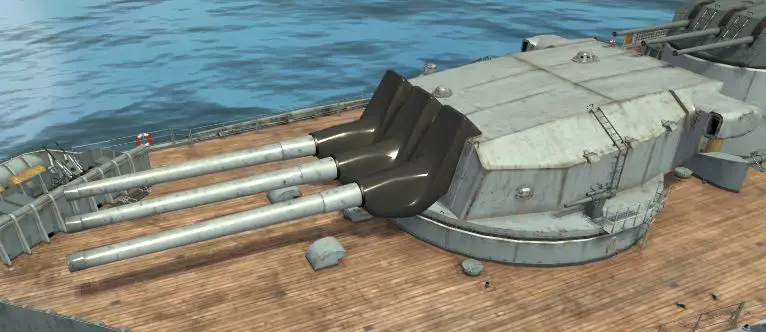
| 2 x 3 406 mm/50 Schneider | |
| Maximum Firing Range | 25.020 km |
| Reloading Time | 26 s |
| 180 Degree Turn Time | 30.0 s |
| Optimal firing angles at the front | 36° |
| Optimal firing angles at the rear | 30° |
| Sigma | 2.00 sigma |
| Maximum Dispersion | 253 m |
| Shells | |
| Type of Projectile | HE – 406 mm HE Mle 1938 |
| Alpha Damage | 6 100 HP |
| Damage | 5 780 HP |
| Penetration capacity | 68 mm |
| Explosion size | 2.66 |
| Fire chance | 49 % |
| Projectile Speed | 850 m/s |
| Air Drag | 0.222 |
| Projectile Mass | 1 085 kg |
| Type of Projectile | AP – 406 mm APC Mle 1938 |
| Alpha Damage | 13 200 HP |
| Chance to Cause Fire | -0.5 % |
| Projectile Speed | 850 m/s |
| Air Drag | 0.222 |
| Projectile Mass | 1 085 kg |
| Projectile Krupp | 2 400 |
| Projectile Detonator | 0.033 s |
| Detonator threshold | 68 mm |



| 3 x 3 152 mm/55 Mle 1936 | |
| Maximum Firing Range | 7.000 km |
| Reloading Time | 12.0 s |
| Sigma | 1.00 sigma |
| Shells | |
| Type of Projectile | HE – 152 mm HE OEA Mle 1937 |
| Alpha Damage | 2 200 HP |
| Damage | 790 HP |
| HE penetration | 25 mm |
| Explosion Size | 0.58 |
| Chance to Cause Fire | 12 % |
| Projectile Speed | 870 m/s |
| Air Drag | 0.34 |
| Projectile Mass | 55 |
| 12 x 2 100 mm/45 Mle 1933 | |
| Maximum Firing Range | 7.000 km |
| Reloading Time | 4.0 s |
| Sigma | 1.00 sigma |
| Shells | |
| Type of Projectile | HE – HE-42 |
| Alpha Damage | 1 400 HP |
| Damage | 310 HP |
| HE penetration | 17 mm |
| Explosion Size | 0.29 |
| Chance to Cause Fire | 6 % |
| Projectile Speed | 780 m/s |
| Air Drag | 0.314 |
| Projectile Mass | 13.5 |
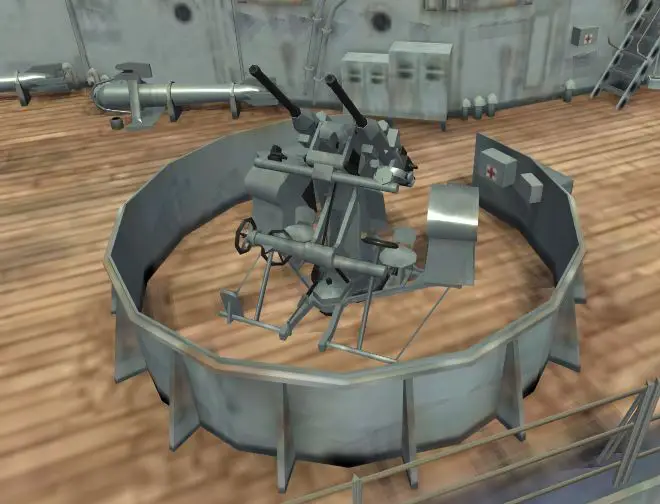
| 3 x 3 152 mm/55 Mle 1936 12 x 2 100 mm/45 Mle 1933 | |
| Sector range | 0.1 km – 5.8 km |
| Hit chance | 75 % |
| Sector’s damage | 40 |
| Sector’s damage frequency | 0.29 s |
| Sector’s damage per second | 140 |
| Flak clouds number | 6 |
| Flak cloud damage | 1 260 |
| 12 x 2 37 mm/50 Mle 1933 | |
| Sector range | 0.1 km – 3.0 km |
| Hit chance | 75 % |
| Sector’s damage | 15 |
| Sector’s damage frequency | 0.29 s |
| Sector’s damage per second | 53 |
| 9 x 2 25 mm/60 CAD Mle 1939 | |
| Sector range | 0.1 km – 2.5 km |
| Hit chance | 70 % |
| Sector’s damage | 32 |
| Sector’s damage frequency | 0.29 s |
| Sector’s damage per second | 112 |
Slot 1 | Slot 2 | Slot 3 | Slot 4 |
Damage Control Party I Work time: 15 s Cooldown: 120 s | Repair Party I Number of charges: 3 Work time: 28 s Cooldown: 120 s HP regeneration time: 0.5% HP/s | Spotting Aircraft I Number of charges: 3 Work time: 100 s Cooldown: 360 s Bonus: +20% maximum firing range | Engine Boost I Number of charges: 2 Work time: 180 s Cooldown: 180 s Boost: +8% speed |
Damage Control Party II Work time: 15 s Cooldown: 80 s | Repair Party II Number of charges: 4 Work time:80 s HP regeneration time: 0.5% HP/s | Spotting Aircraft II Number of charges: 4 Work time: 100 s Cooldown: 240 s Bonus: +20% maximum firing range | Engine Boost II Number of charges: 3 Work time: 180 s Cooldown: 120 s Boost: +8% speed |
Fighter I Number of charges: 2 Work time: 60 s Cooldown: 135 s Patrol Radius: 3.0 km Number of fighers: 3 | |||
Fighter II Number of charges: 3 Work time: 60 s Cooldown: 90 s Patrol Radius: 3.0 km Number of fighers: 3 |
The armor

The armor of the Champagne is sitting between the one of a cruiser and the one of a battleship. The middle section has the 32 mm plating that you could find on Gascogne, but the bow and the stern are only 25 mm thick like on cruisers.
The bow section
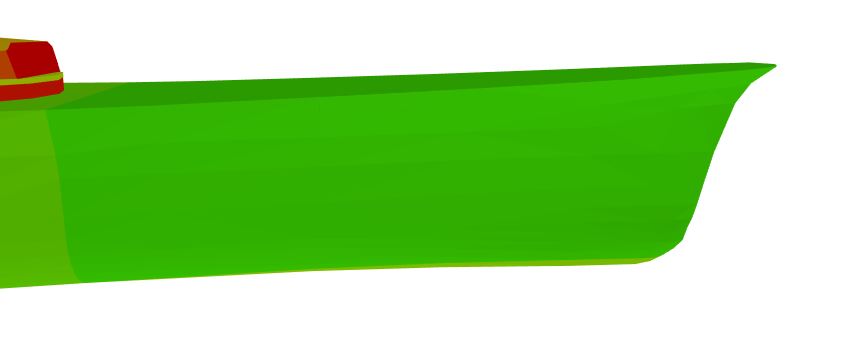
The bow is entirely covered with 25 mm of armor. Now… here I already have an issue with this since any battleship at this tier (except Odin with her 305 mm guns) can happily overmatch this. The thing is that it’s not the bow of a more agile cruiser that is also relatively small. Here it is a big battleship size bow.
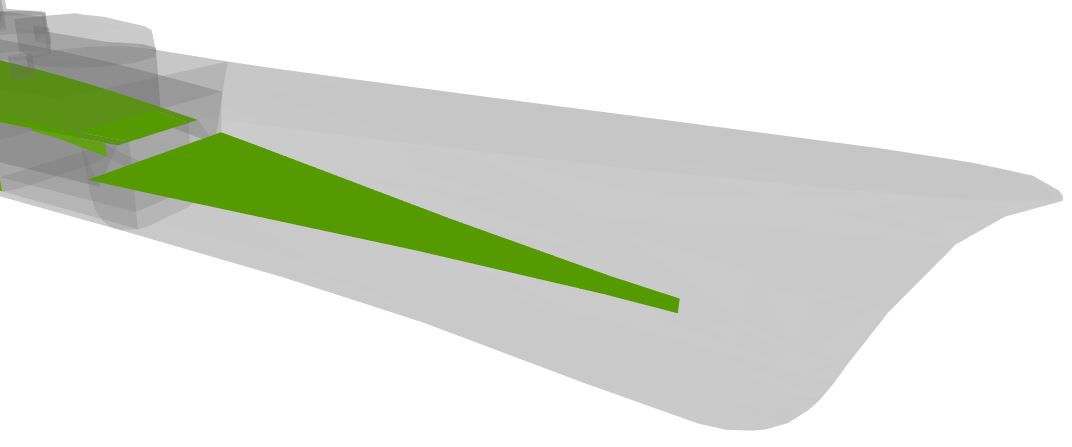
Inside the bow, there is a 40 mm armored deck that covers the lower part of the citadel athwartship. It doesn’t make the Champagne entirely immune to citadels through the bow, but reduces the risk greatly.
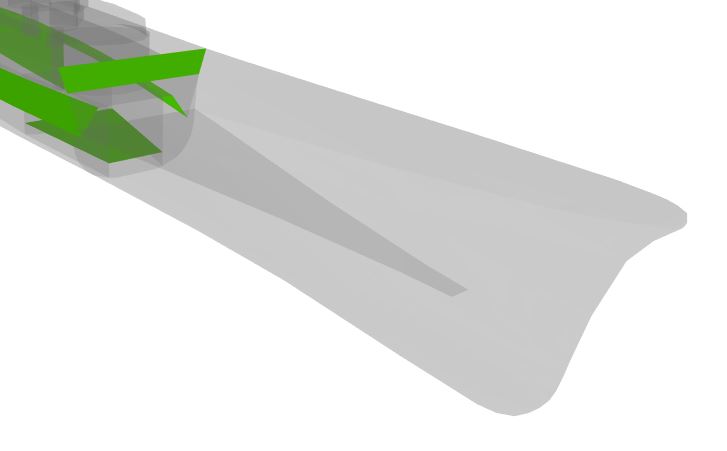
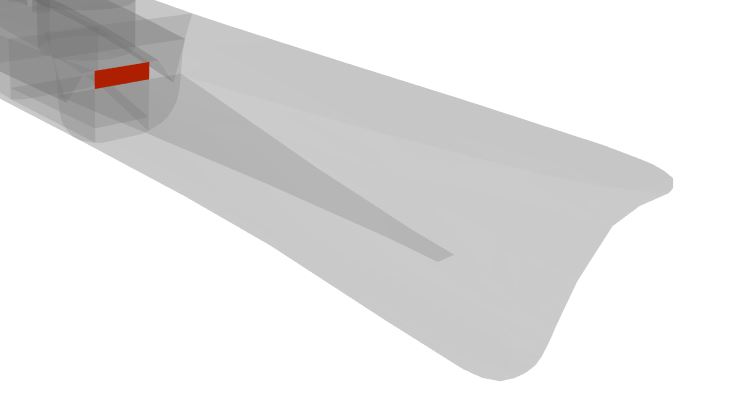
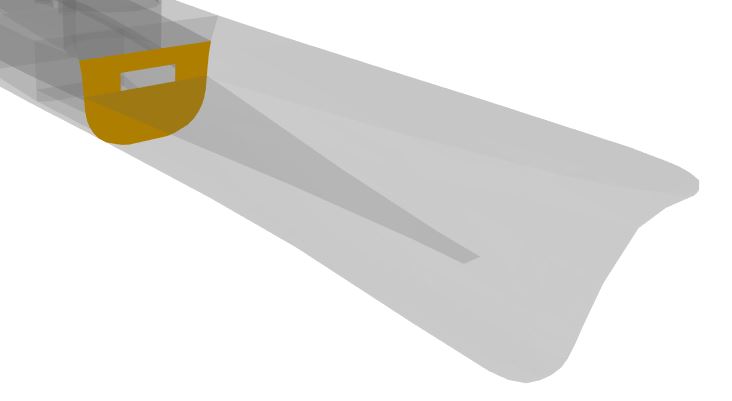
For the protection of the middle section, the casemate is 30 mm thick, the upper part of the citadel’s athwartship that is not covered by the armored deck is 355 mm thick and the lower part, as well as the bulkheads around the citadel, is 233 mm thick.
Overall, it’s a decent protection, but going bow tanking with this ship against other battleships will not be wise.
The middle section

The middle section is more similar to something that you would find on a battleship. The deck, the upper sides, as well as the torpedo bulges, are 32 mm thick.
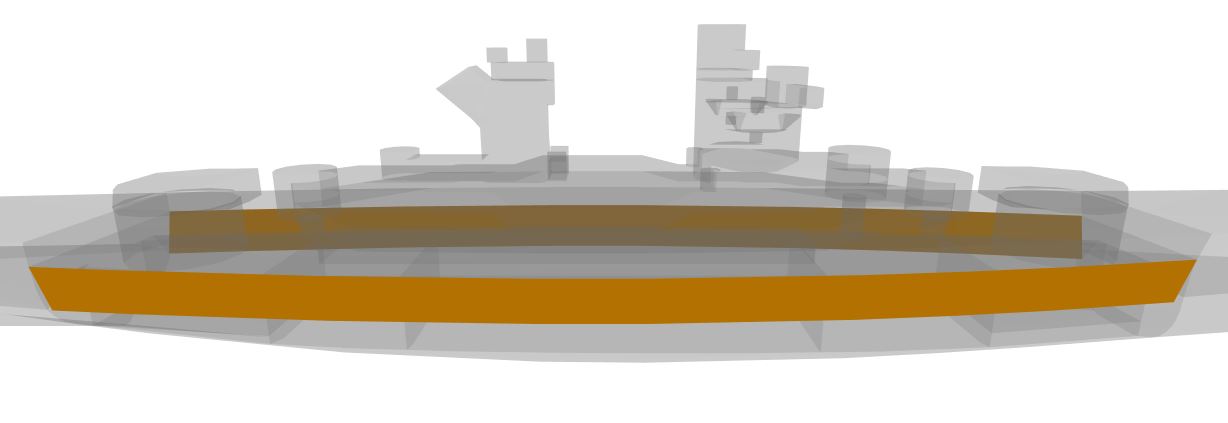
The main belt is much thinner than on the Gascogne with a thickness of 240 mm compared to 320 mm. It is actually just slightly better than on the Dunkerque that has a 225 mm main belt.

Compared to Gascogne’s 50 mm turtleback, the one of the Champagne is only 30 mm thick. This is actually pretty bad since it means that Yamato-class ships and other battleships with 431 mm guns or bigger can overmatch this, rendering the citadel terribly vulnerable. As you can see, the central part of the citadel side armor is also 30 mm thick.
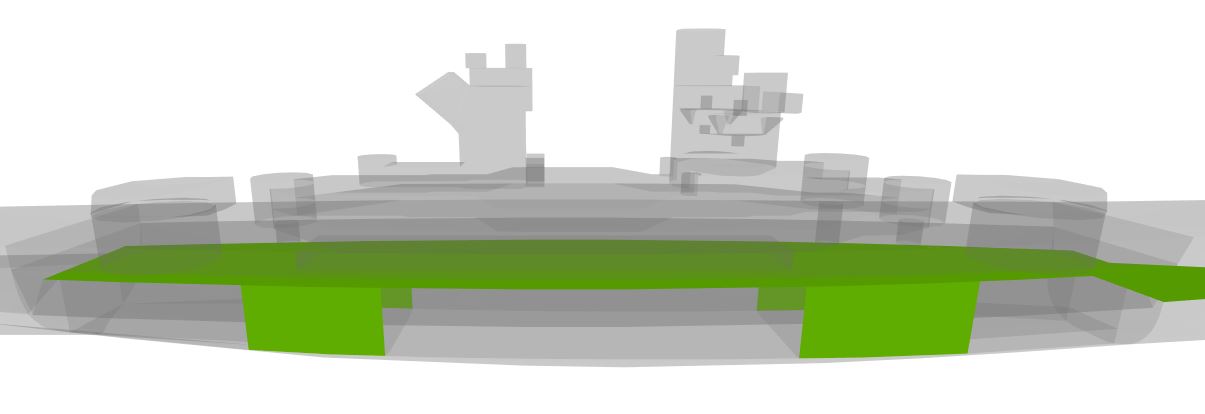

For the rest of the citadel’s side armor, it is 40 mm thick under the 152 mm secondaries and 50 mm thick under the main batteries. As you can see, the citadel’s deck is also 40 mm thick.
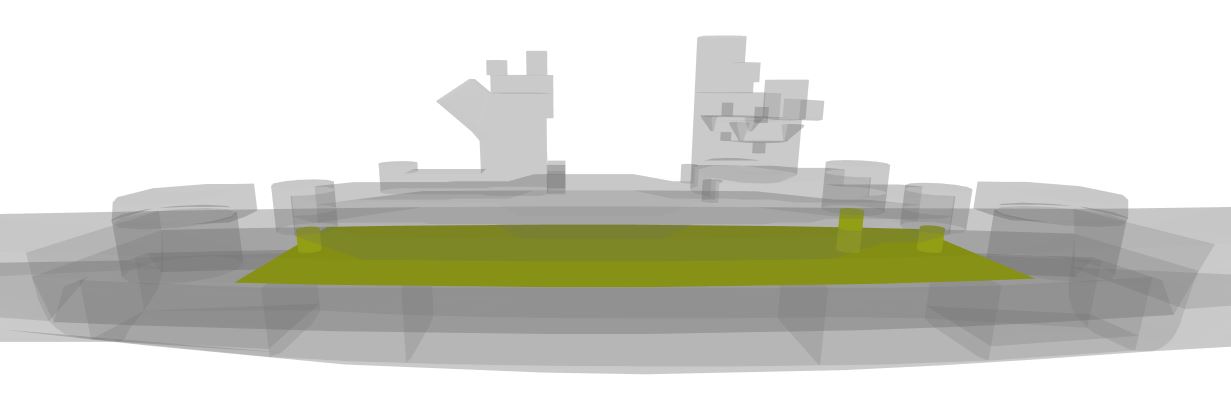
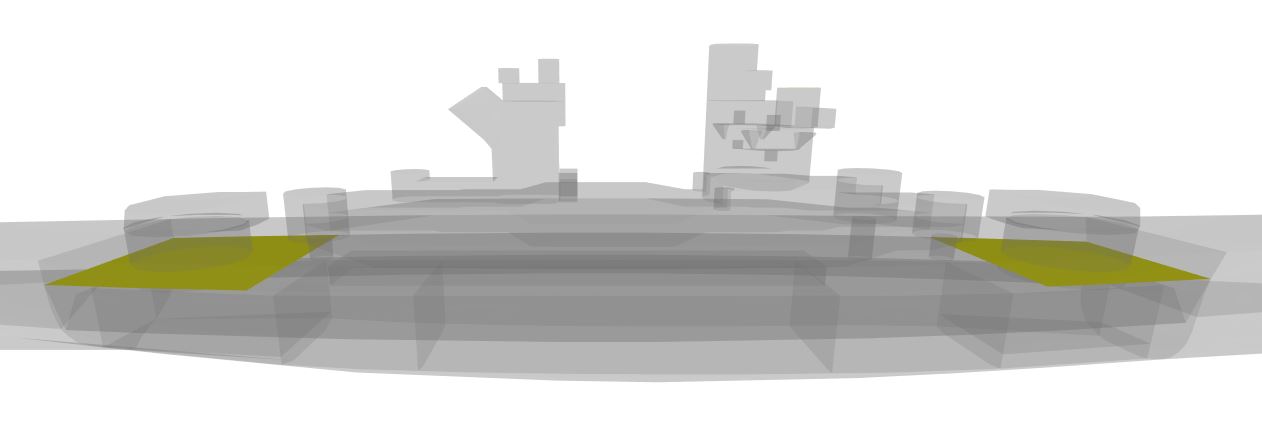
For the horizontal protection, the Champagne is actually a tough nut to crack. Completing the 32 mm weather deck and the 40 mm citadel deck, her main armor deck is quite thick with 150 mm of armor in the middle and 175 mm of armor below the turrets. The Shokaku and Enterprise are unable to score citadels on this ship and even the Hakuryu will struggle a lot with maybe 1 or 2 citadels here and there.
An interesting thing to note is that the barbettes of the 152 mm secondaries are actually reaching the main armor deck while on Gascogne, they stop directly on the weather deck.
The stern section
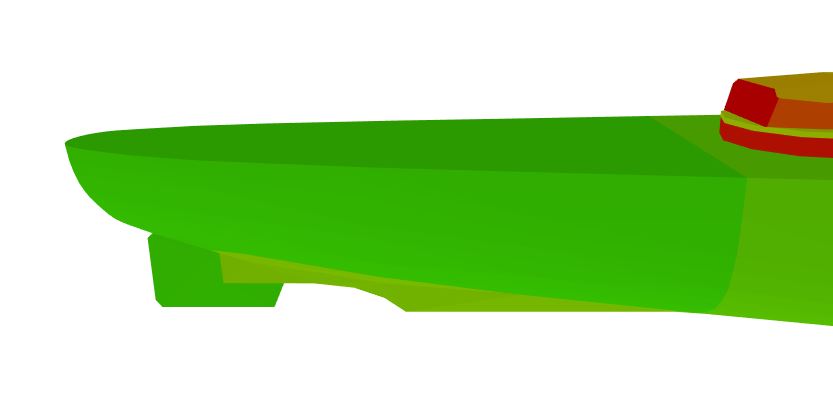
The stern of the Champagne is entirely covered by 25 mm of armor just like the bow.
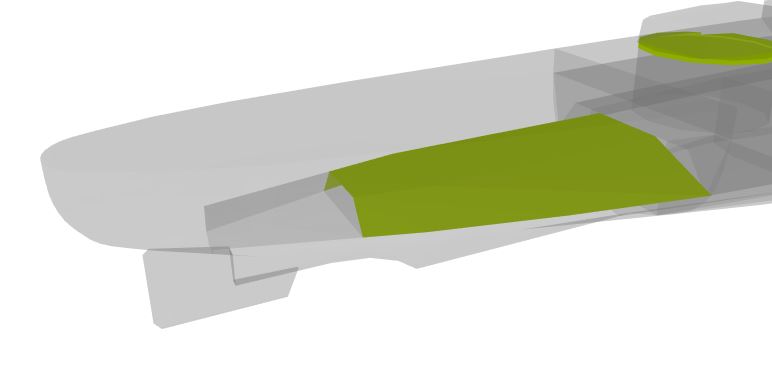
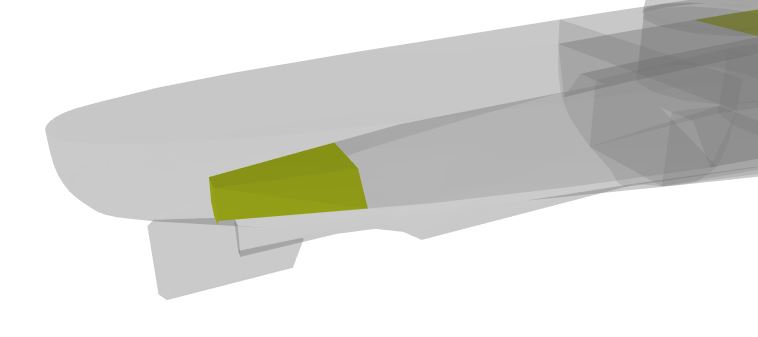
Inside the stern, there is a very strong armored deck that entirely covers the citadel’s athwartship. It is 100 mm thick at first and around the steering gears, goes up to 150 mm. This ship is basically tailor-made for kiting with her good firing angles at the rear and her fully protected citadel thanks to this armored deck.
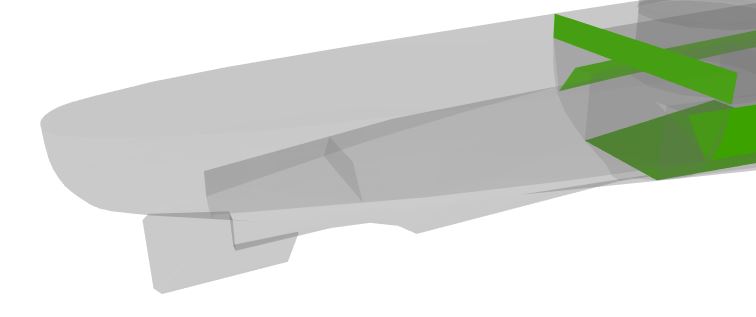
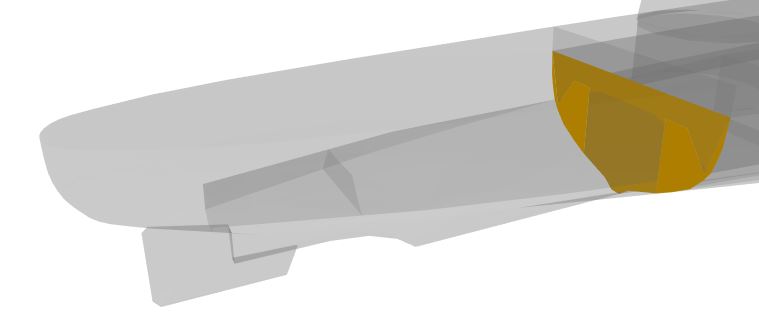
For the protection of the middle section, the casemate is 30 mm thick and everything else (the citadel athwartship and the bulkheads around it) is 233 mm thick.
The superstructure

The superstructure being the same as on the Gascogne, it is fairly large and is 19 mm thick except for the 100 mm thick barbettes of the 152 mm secondaries and the conning tower.
The turrets

The turrets present a similar armor protection to the French 380 mm quadruple turrets. Sadly… well it’s not really a good thing since we all know how vulnerable these turrets can be.
The face is 430 mm thick with a 15° slope, the sides are 300 mm thick and the back is 270 mm thick. For the roof, the frontal part is 195 mm thick and the rear part is 175 mm thick.
When it comes to the barbette, the top is 100 mm thick, the biggest part is 405 mm thick and at the bottom, it is 85 mm thick.
Personal opinion
For all intents and purposes, the Champagne is literally a battlecruiser. A large ship with battleship guns and that trades armor for speed. This leads to me thinking that the ship is actually going to be a testbed for other ships that will follow the same kind of balancing. We will most likely see soon ships like the Renown and such.
In fact, they already introduced the Borodino (not tested yet) before with the same kind of armament and armor protection so the ship will most likely receive the same kind of treatment for her gun dispersion and reload.
As for the Champagne itself, I’m actually quite looking forward to testing this ship. Accurate guns with relatively fast reload and relatively weak armor, but very good speed in exchange. Now…. having Slava-like guns at tier VIII will be quite funny because of the ludicrous penetration on these guns, but we will see.

Also, don’t ask me why, but there is a tea-pot inside the commanding bridge.

















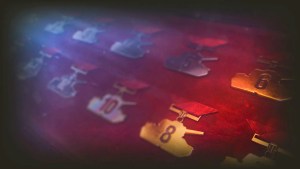


Alsace was meant to counter Bismarck, not the H-cl***. The plan was to have 24 380mm barrels with 2 ships, while Germany would need 3 Bismarck-cl*** ships to match that number.
The additional Richelieu-cl*** battleships (Clémenceau and Gascgone) were meant as a response to the Bismarck-cl*** battleships, not the Alsace-cl***.
Wrong. They were the response to the italian Littorio-cl***.